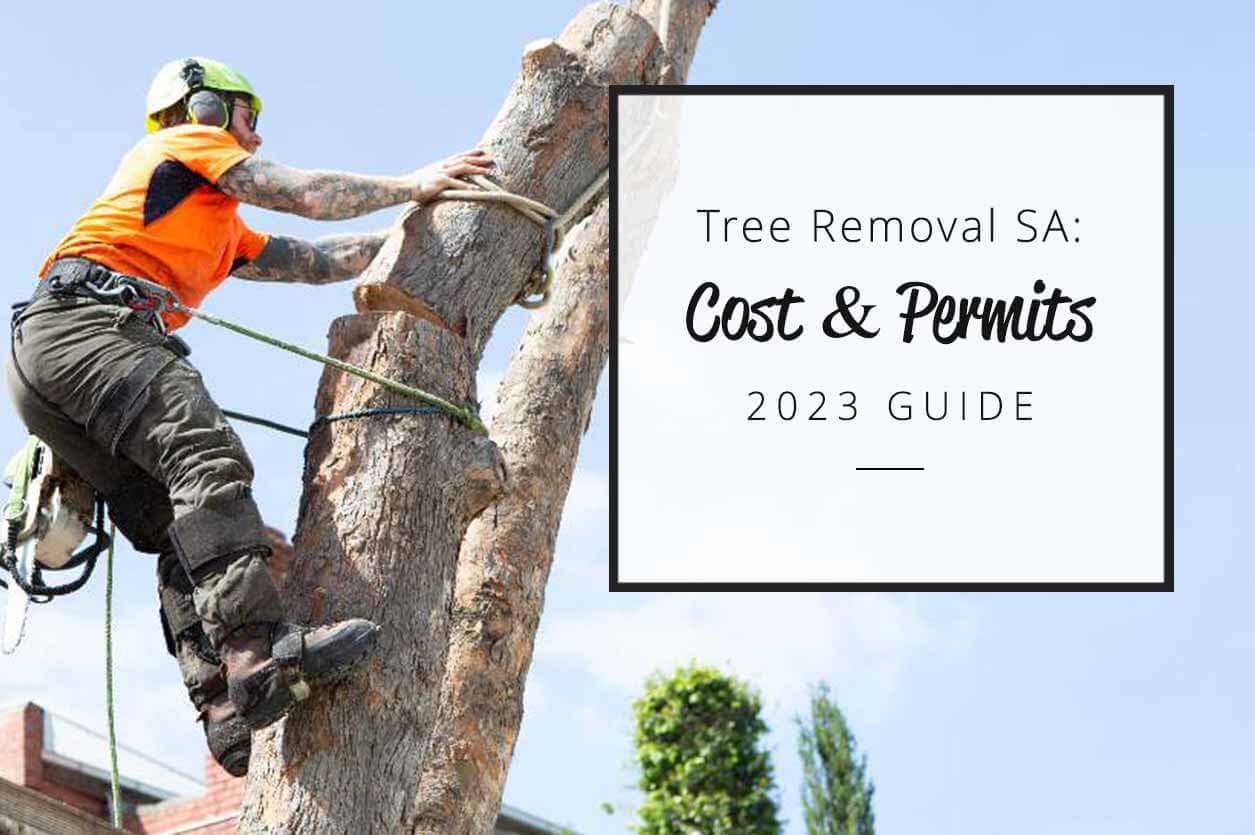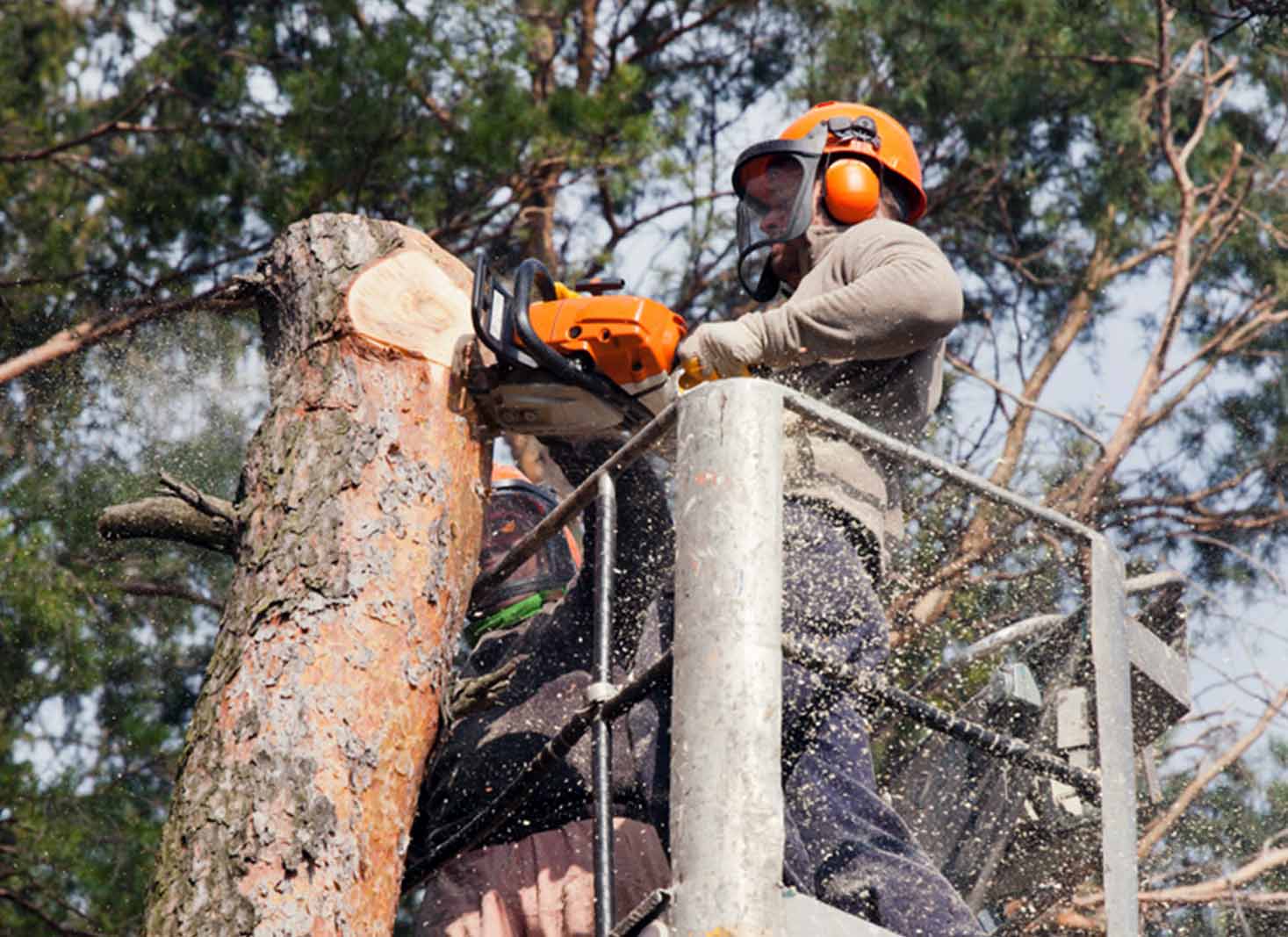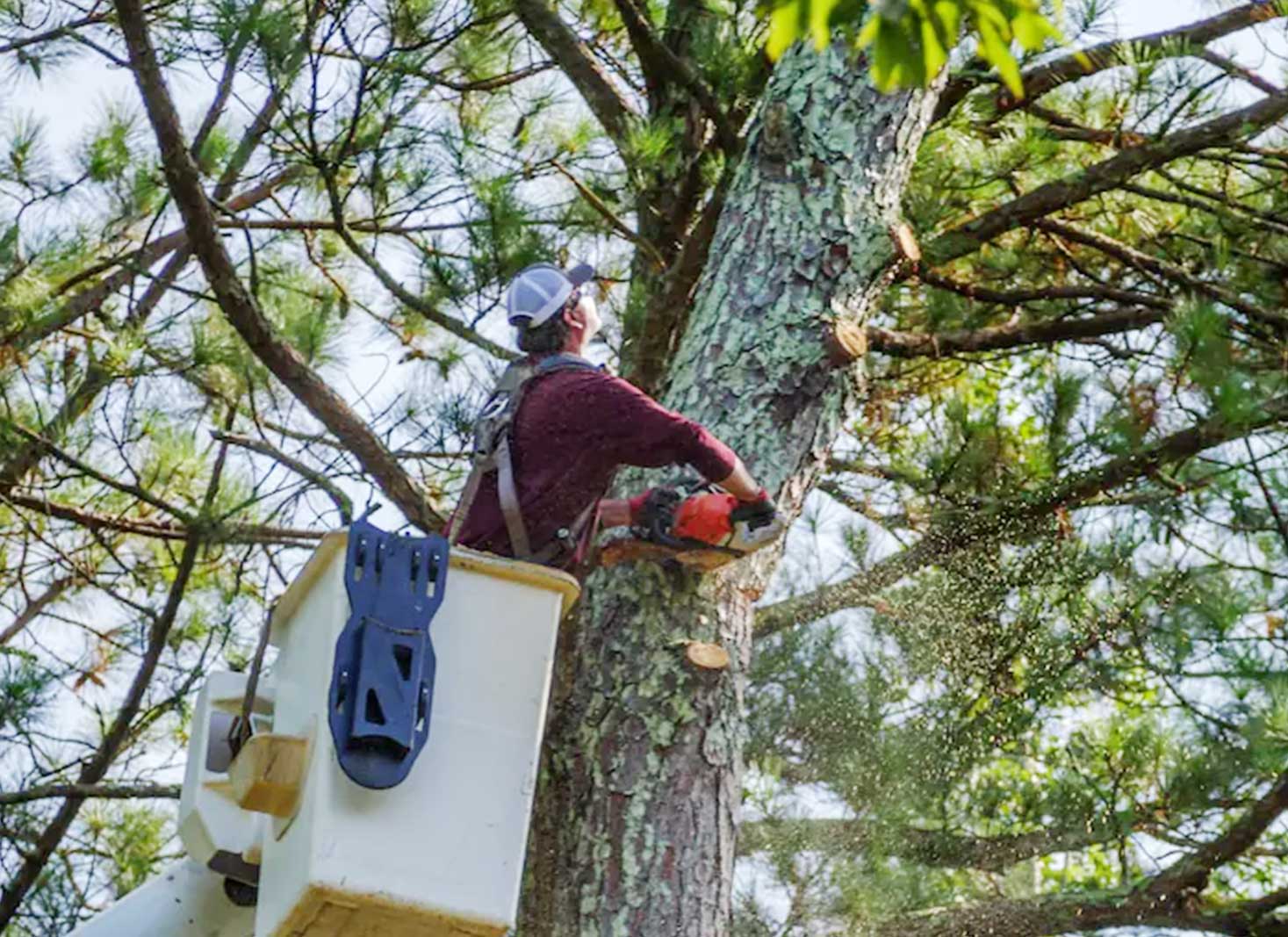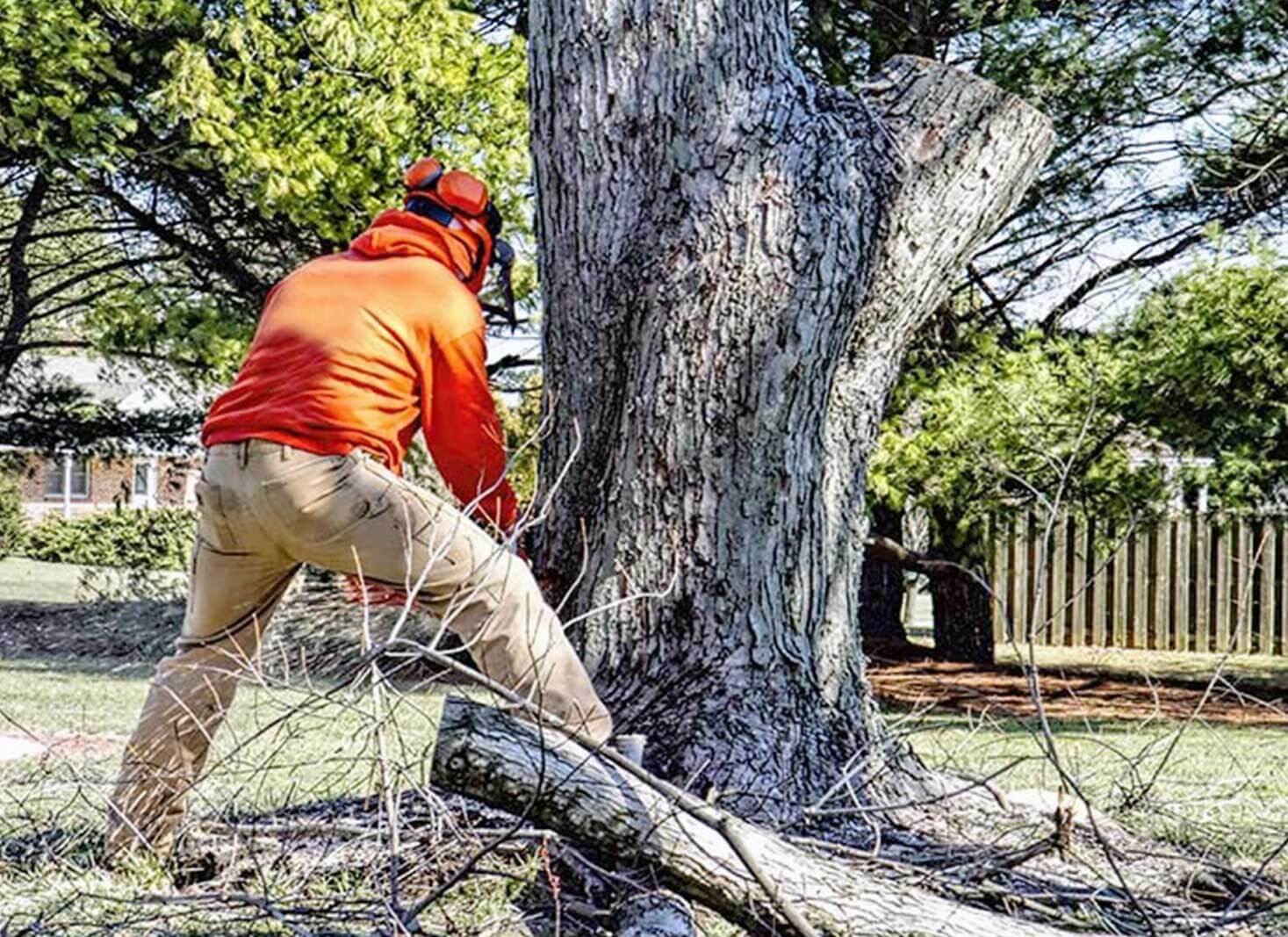There are various reasons why tree removal might be necessary, including disease, storm damage, age, or structural issues. However, removing a tree in SA, and generally, all of Australia, needs careful planning, assessment, and execution by qualified and experienced professionals.
The cost of tree removal in SA can range from $500 to $5,000, with an average of $1,270 for medium-sized trees. The exact cost varies depending on the size of the tree, access to heavy equipment and obstacles.
Property owners in Southern Australia are required to apply for permission from their local council before removing any trees.

Cost of tree removal in Southern Australia
Tree removal in South Australia can range significantly in price. On average, homeowners pay around $1,270 for a standard removal job, although costs can range from $500 to $5,000 depending on factors like tree size, location, and accessibility.
For example, an Adelaide tree located in a narrow urban lane may incur higher charges than one on an open property. It’s wise to compare different removal services in Adelaide and check for a professional quotation provided by licensed tree removalers. This ensures you understand the cost to remove trees while also balancing affordability with quality work.
Here is a rough estimate of the cost of tree removal based on tree height:
| Tree size | Estimated height | Average cost |
|---|---|---|
| Small Trees | up to 25 feet | $200 - $500 |
| Medium Trees | 25 - 50 feet | $500 - $1,000 |
| Large Trees | 50 - 75 feet | $1,000 - $2,000 |
| Extra large trees | over 75 feet | $2,000 - $5,000 |
How to reduce the cost of tree removal in SA
Reducing the expense of removal projects while still ensuring quality work is vital. Here are some tips to lower costs and get the most out of your investment:
Get multiple quotes
Contact several tree services to request a free quote. This allows you to compare cheap tree removal options without compromising on safety or quality. Quality tree removers are known for offering competitive rates, whether it’s removal and tree or tree removal and stump packages.
Consider the time of year
Scheduling tree removal in the off-season – like winter – can reduce wait times and lower prices due to decreased demand.
For example, many tree removal services in Adelaide offer affordable tree removal jobs during quieter periods.
Consider leaving the stump
Stump removal can add significant costs to the overall job. If it’s not a safety hazard, consider leaving it for the time being or removing it later on.
Sometimes, opting for tree and stump removal at a later date might be a wise decision if the stump removal fee is high. In many cases, leaving the stump might save you money if complete removal isn’t urgently needed.
Salvage the wood
If the tree provides a range of tree wood that can be repurposed for furniture, firewood, or even sold, consider this as an opportunity to subsidize the expense. Even palm tree removal might yield salvageable materials, and a quality palm tree can sometimes be reimagined if you have the skills in tree management and tree care.
In addition to tree removal, regular tree maintenance like pruning and trimming can play an important role in preserving the health of your trees.
DIY removal
If you have the necessary skills, equipment, and safety gear, you may be able to handle some of the tree removal yourself, such as cutting down small trees or pruning branches.
Remember, however, that safety should always come first when it comes to tree removal. Always prioritize hiring a professional tree removal company if you’re unsure about the job’s complexity or safety requirements.

Do I need permission to cut down trees on my property in SA
Yes, you may need permission to cut down trees on your property in Southern Australia. The rules and regulations around tree removal can vary depending on the state or territory, as well as the specific circumstances of the tree in question.
Even if the tree is on private property, there may be restrictions on its removal if it is a protected species or located in a designated conservation area.
For a tree located within a local council area, you may need to obtain permission from the local council before removing a tree. Consulting an experienced arborist or a tree expert can help you understand the care of your trees and ensure compliance with local regulations.
In some cases, exemptions may apply for emergencies or for trees that pose a risk to public safety. However, it’s essential to check with the appropriate authorities first to avoid any potential legal or financial repercussions.
What permits are necessary for tree removal in SA

When removing a tree in SA, you may require a permit. However, the permit required can vary depending on several factors, such as the location of the tree, its species, and its size. It’s important to note that the permit requirements can vary depending on the local council.
Applying for a permit usually involves submitting an application, paying a fee, and providing supporting documentation, such as an arborist report, tree protection plan, vegetation management plan or environmental impact assessment.
Here are some common permits and permissions that may be required:
Council permit
If the tree is located in a council or government area, you may need to obtain a permit from the local council or government authority before removing the tree.
Heritage permit
If the tree is located in a heritage-listed area, you may need to obtain a heritage permit before removing the tree.
Environmental permit
If the tree is located in a designated environmental protection area, such as a national park or wildlife reserve, you may need to obtain an environmental permit before removing the tree.
Native vegetation permit
If the tree is a protected species or is located in an area of native vegetation, you may need to obtain a native vegetation permit before removing the tree.
It’s always best to check with the relevant local council or government authority before removing any trees to ensure you comply with any regulations or bylaws.
What trees can be removed without a permit SA

The rules and regulations around tree removal without a permit can vary depending on the state or territory and the specific circumstances of the tree in question. However, here are some general guidelines that may apply in Southern Australia:
Dead trees/ tree branches
Once a tree dies the roots that keep it anchored to the ground and upright begin to die and rot away and a stiff wind or prolonged periods of rain can shift the tree and cause it to fall over.
Also, dead branches on a tree are dangerous and should be routinely removed before they fall naturally. They can come down with a lot of force and can do some serious damage to persons and property.
Tree in the fire hazard zone
Like all Australian states, South Australian bushfire zones allow residents to remove any tree significant or otherwise from within 20m of their homes if they live within a medium or high bushfire area. This helps protect homes in bushfire zones from incinerating.
Non-protected tree species
If the tree is not a protected species, such as eucalyptus or acacia, it may not require a permit for removal. However, it’s important to check the relevant local legislation to determine which species are protected in your area.
Trees posing a safety hazard
If the tree is posing an immediate safety risk, such as being at risk of falling and causing harm or damage, it may be able to be removed without a permit. However, it’s important to document the hazard and take appropriate safety measures before proceeding with the removal.
It’s essential to note that these guidelines are general and may not apply to every situation. It’s always best to check with the relevant local council or government authority before removing any trees to ensure you comply with any regulations or bylaws.












